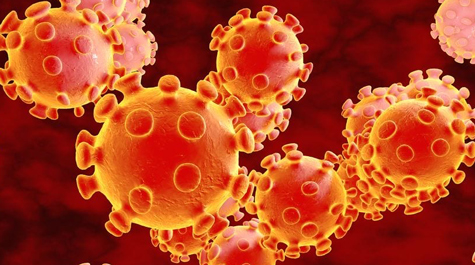William & Mary mathematicians help to develop COVID-tracking database
A William & Mary mathematician and an undergraduate student are part of a team that has developed an interactive, user-friendly dashboard tracking COVID-19 infections and deaths across the U.S.
GuanNan Wang, a professor in the university’s Department of Mathematics, and Yuan Gu ’20 were members of a research team based at Iowa State University. The dashboard is itself just the public-facing aspect of a larger set of scientific models used by the Center for Disease Control and Prevention.
Wang explained that the COVID-19 Dashboard offers a seven-day rolling forecast and a four-month projection of coronavirus infection/death count at both state and county levels. The dashboard displays the results from the analysis derived from the merging of four publicly available databases. She said Gu is working on the next step.
“After our dashboard was launched, we received a lot of public attention, and also many requests from our users to develop the mobile version of our dashboard,” Wang said.
Gu, a math and computer science double major, is now a graduate student at Carnegie Mellon University. He is developing a mobile version of the dashboard under Wang’s mentorship.
“Gu started with the development of the mobile app, based on the Android system,” Wang said.
She explained Gu has made considerable progress: developed a mobile user interface, set up the database and connected the database with the user interface.
“Right now, he is focusing on the functions and queries related to the app,” Wang said. “We look forward to releasing the app quite soon.”
The larger dashboard project was headed by Lily Wang, professor of statistics at Iowa State, who was one of GuanNan Wang’s Ph.D. advisors. The two are long-time collaborators.
An announcement from Iowa State notes that the initiative is the first to generate COVID-19 forecasts for all 3,104 counties in the 48 contiguous states and the District of Columbia.
It provides real-time analysis with COVID-19 infection and fatality data from John Hopkins University, The New York Times, The Atlantic, USAFacts, the World Health Organization and the CDC. County-specific data, which includes information about a variety of local features, is gathered from state and county health departments, local databases, census data, mobility data, government press releases and the U.S. Department of Transportation.
“We delve deep into the dynamics of these counties. We even analyze the number of hospital beds in the area, the healthcare infrastructure and local healthcare expenditures,” Lily Wang said in the Iowa State release. “Detailed, county-specific modeling provides a thorough and richer understanding of how COVID-19 is impacting local communities.”
Local demographics, such as male-to-female ratios, age and minority populations are also factored into the county models. The status of local control policies—such as shelter-in-place orders, social-distancing mitigation and regulations on businesses and schools are analyzed, along with county-level mobility data.
















